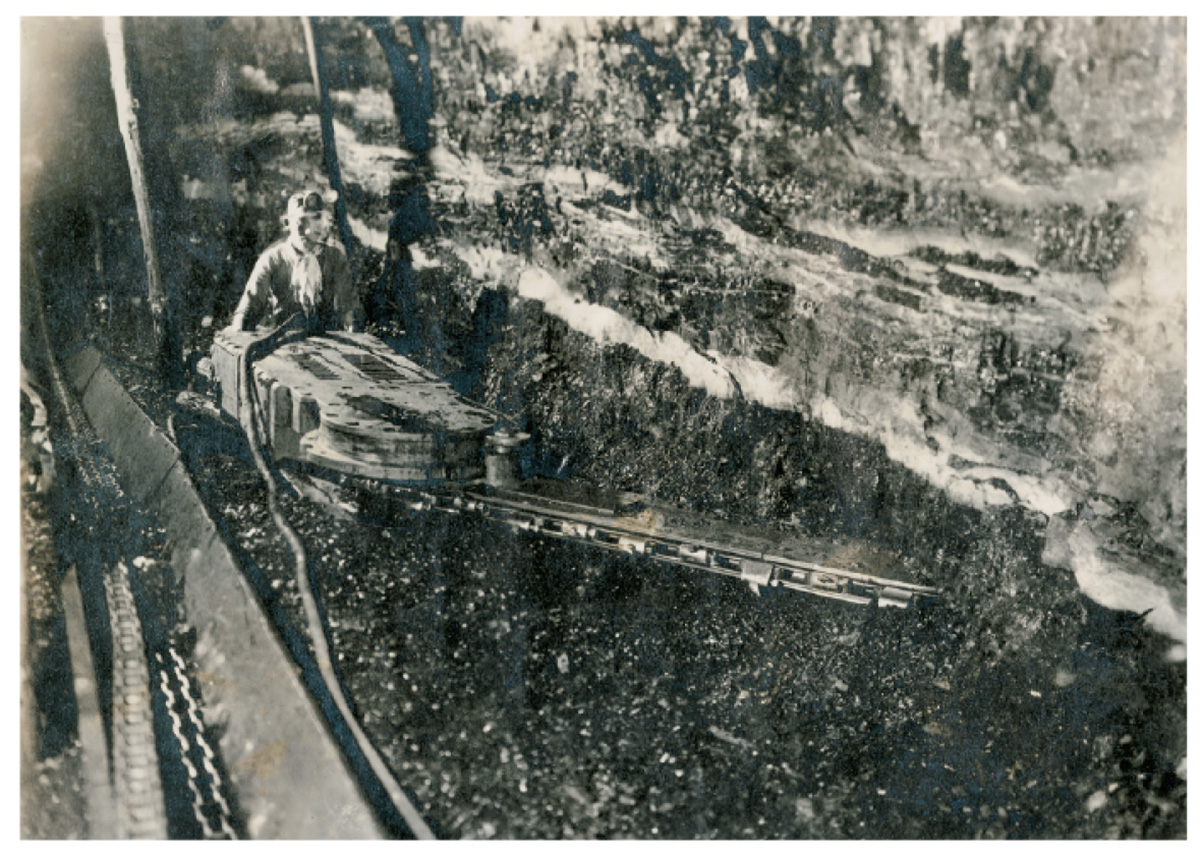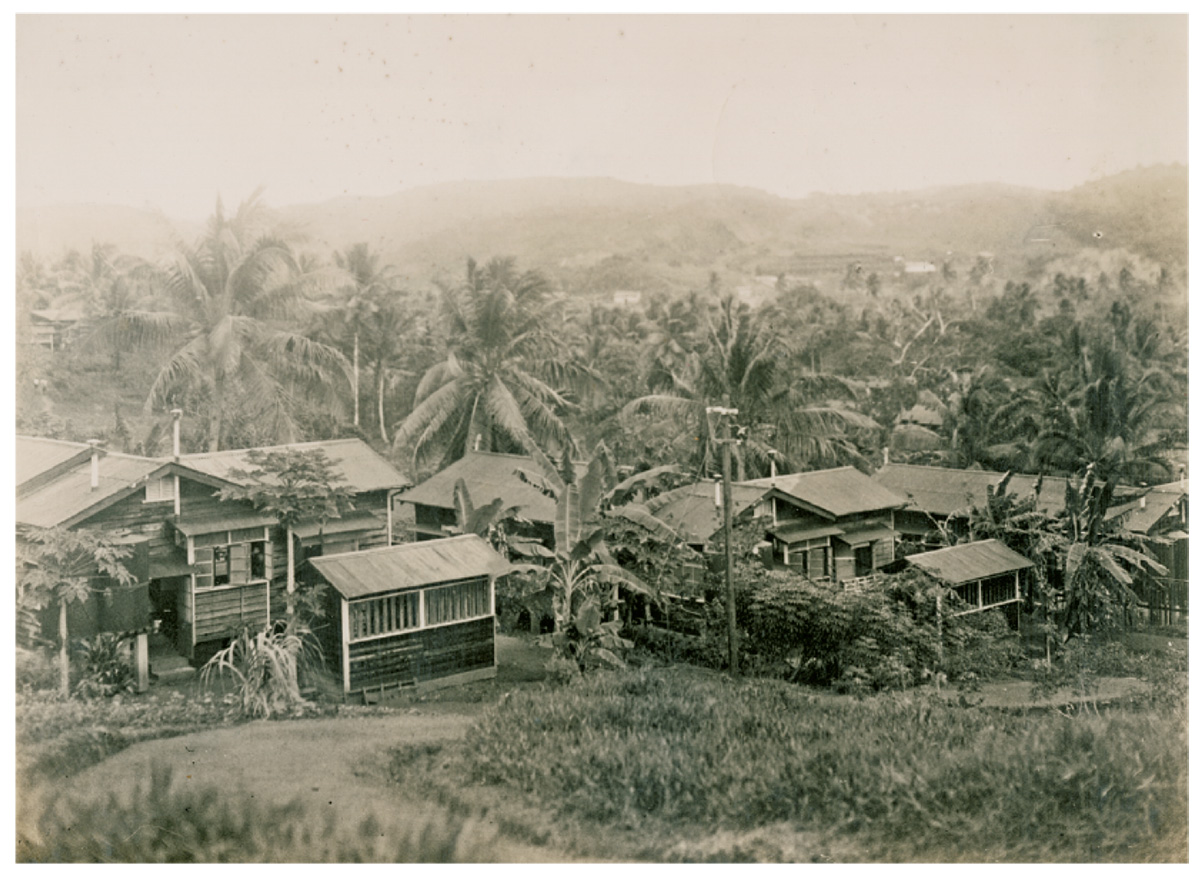47 War and the Mines

Mechanization of Coal Mining
Since the 1920s, Mitsui Mining had been actively introducing machinery at each of its coal mines in an effort to increase production capacity. Particularly in the 1930s, drastic advances were made to mechanize the coal mining sector, the most underdeveloped area of the coal industry. Tools such as coal drills for boring holes to load explosives, and coal cutters for making grooves in coal seams (→Fig. 47b) brought greater efficiency to coal mining. In 1935, Mitsui Mining was producing about six million tons of coal, equivalent to 15% of total output in Japan, while also reducing costs and achieving high profitability.
Wartime Regime and Coal Mines
The outbreak of the second Sino-Japanese War in 1937 required the suppression of civilian demand and the concentration of all resources and funds on the munitions industry. Later during the Pacific War, comprehensive controls were extended over all labor (human resources), goods (materials), and finances (money), and the increased production of coal, a domestic energy source, was encouraged. However, as the war situation worsened, labor shortages, equipment wear and tear, and material shortages became increasingly apparent. Despite these adverse conditions, Mitsui Mining continued to increase its output, producing nearly 10 million tons of coal domestically by 1944.
Dealing with the Munitions Industry
Under wartime controls, Mitsui Mining expanded its operations to include munitions-related production and resource development. As mentioned in the description of the figure below, at the request of the military, the company undertook the plant construction and management of Manchurian Synthetic Fuel aiming to succeed in the synthetic petroleum business (a process involving artificially synthesizing petroleum from coal and other raw materials). Heavily dependent on the U.S. for its oil supply, Japan pursued this major initiative as a national policy. Meanwhile, less enthusiastic opinions began to emerge among Mitsui leadership due to difficulties in procuring resources and significant delays in the plan. However, amid a severe shortage of oil, they were eventually unable to withdraw from the project without risking friction with the military. Domestically, Mitsui was also investing in ventures such as Teikoku Fuel Industry, Miike Synthetic Oil, Hokkaido Synthetic Oil, and Karafuto Synthetic Oil. Despite pouring a total of about 100 million yen into these synthetic oil projects, Mitsui failed to produce any outstanding results. The Manchurian Synthetic Fuel plant in particular faced the end of the war while still in the midst of repeated test runs and repairs, a disastrous result for them.
Elsewhere, at Mitsui Mining’s Miike Dye Works, production of munitions such as explosives was being expanded to meet military demands. In 1941, Miike Dye Works was spun off as Mitsui Chemical Industry, marking the ongoing expansion of Mitsui’s chemical business.
Business in Occupied Territories
As the second Sino-Japanese War advanced, Mitsui Mining expanded into the Chinese mainland where the flames of war had spread, taking on management of mines in occupied territories. In addition, with increasing demand for aluminum as a material for aircraft, Mitsui also invested in South Seas Aluminum Mining to secure a supply of bauxite, a raw material, effectively gaining control of its operations. The company’s Palau mining works, established in Garasumao on Palau’s main island, began mining in 1938 (→Fig. 47c).
With the outbreak of the Pacific War, the Japanese government placed local factories and mines it had requisitioned in occupied southern regions under military control, with some operated directly by the military while the majority were managed through civilian contractors. From 1941 onward, Mitsui Mining was repeatedly ordered to take on management responsibility and cooperate with military-run enterprises. Notably large-scale projects included the Mankayan Copper Mine on Luzon Island in the Philippines; tin mines in Malay; and the Bukit Asam Coal Mine in Sumatra. Numerous engineers and administrative staff were dispatched to these southern regions, where they engaged in resource extraction employing local labor in the midst of repeated cycles of destruction and reconstruction associated with the ongoing warfare.
Defeat
Even after its expansion under wartime control, and after spinning off its chemical industry division, Mitsui Mining continued to generate profits. That said, its operations in occupied territories faced extreme hardships, including the loss of many personnel and much equipment due to intense gunfire and air raids. At the time of Japan’s defeat, most of these overseas assets were lost, and many of the dispatched employees were killed, went missing, or remained stranded where they were. At the coal mines, a lack of resources and continued excessive mining without investment in equipment left the mines in a severely deteriorated state, requiring postwar recovery efforts.

This article (opening excerpt only), dated June 18, 1937, is an outline for the establishment of a synthetic petroleum company, addressed to Mitsui Gomei Kaisha President Mitsui Takakimi from Tojo Hideki, Kwantung Army Chief of Staff. The company would later be established under the new name Manchurian Synthetic Fuel Company. Mitsui Mining, along with Mitsui Gomei Kaisha and Mitsui Bussan, invested in the company at the request of the Kwantung Army, taking charge of factory construction and management. As Mitsui Mining continued to develop through its coal business, it was eventually compelled to invest in these and other national policy projects as the war intensified. Including the expansion of munitions production and ventures into the south seas, the company’s relationship with the military eventually became inseparable.

This machine facilitates mining by cutting away the lower portion of the coal seam, improving blasting efficiency.

In 1944, the mine site was hit by air raids. Workers were mobilized for tasks including construction of airfields and fortifications, leading to a complete halt in production.
